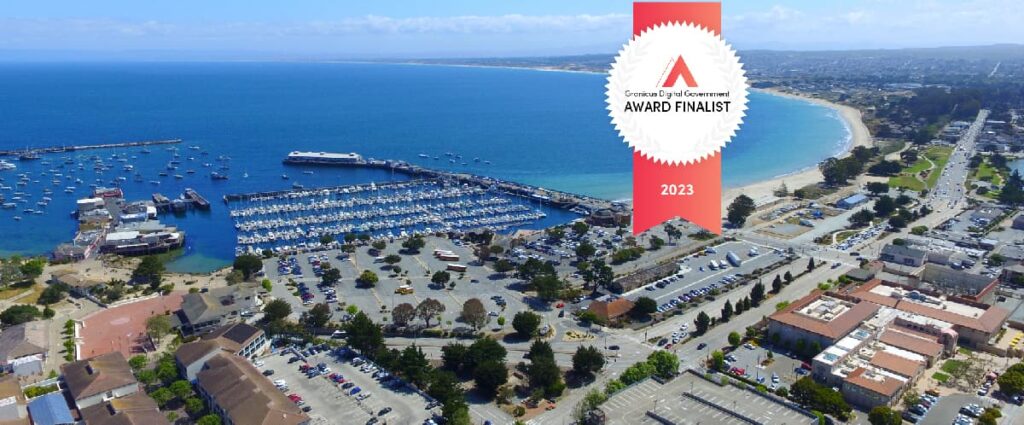Overview
Picturesque Monterey County, California, may offer a wide array of interests for visitors and residents alike, but too broad a diversity of interest was creating digital sprawl in the county’s Housing and Community Development website. Using Granicus’ govAccess platform, staff were able to build new connections to reduce redundancies, eliminate outdated information, and create a better digital experience for users.
“The Granicus CMS makes it easy to keep the pages clean and structured. And being able to conduct searches that are only searching an individual department’s website helps avoid getting confusing results with wrong or old data, fees, or other inaccurate information.”
Dina L. Northcutt
Management Analyst/Housing & Community Development Webmaster, Monterey County, CA
SITUATION
Reining in digital sprawl
With its vistas of the Pacific Ocean, Monterey, California, has attracted a diverse population in its long history. From the area’s Spanish and Mexican settlers to the famous fisheries that dominated the shores to the world-renowned Monterey Jazz Festival, Monterey Bay Aquarium, and Car Week, Monterey offers both history and a wide variety of experiences for visitors and residents alike.
While having so many interesting aspects might make for a vibrant community, an array of similar, but unique interests doesn’t make things easy when it comes to local government. When Monterey County launched the Resource Management Agency (RMA) about 10 years ago, it brought together several departments, centers, and agencies, each with separate websites.
With each website managed by various individual department personnel—whomever had the bandwidth—creating the unified RMA website created complications for the IT team: Pages were orphaned with no connection to main site navigation, similar pages from different departments would confusingly share titles, unclear navigation would make it difficult to find pertinent information, and, perhaps most challenging of all, none of the re-grouped websites were in compliance with ADA or Section 508.
“Customers had legitimate complaints that they couldn’t find what they needed,” said Dina L. Northcutt, County of Monterey Housing and Community Development (HCD) management analyst and webmaster. “We just didn’t have dedicated subject matter experts to help sort through everything back then, no one to help our IT department logically organize the website. They were just using their best assumptions.”
In 2020, RMA split into Housing and Community Development and Public Works, Parks and Facilities, and their website was split in two as well. In 2021, Northcutt was given the task of working with dedicated subject matter experts within the new Housing and Community Development department as well as a dedicated webmaster from the IT department to find ways to reduce the website sprawl.
They found that the basic organizational backbone for the website’s content was, as she put it, “a forest tangled in yarn.”
“The back end in our CMS had pages stored all over the place and most were not following any type of hierarchy,” she said. “That caused confusion to anyone trying to make sense of where everything should go. New pages would get created when a page only needed updating, simply because they couldn’t find the correct page to update, and it seemed easier to just create a new page and link to it, or redirect, and redirect again. As a result, every place the previous page was linked to became a broken link and would need to be updated to the newly created page.”
“This caused redundancy and search issues as well,” she said. “Some of the other county department sites used the same forms and applications as our HCD website, or they linked to a form on a page of our site, but in some cases that form had been updated, but no one knew where all instances of these forms were located, as they were in multiple locations/pages. So, when a user went to locate a form or document, they would be presented with multiple versions with different contact info or outdated policies or fee schedules.”
The challenge presented Northcutt and the dedicated IT web staff with the opportunity to organize Monterey’s digital presence into something that not only could better serve the community but be positioned to grow in a more positive direction.
SOLUTION
Building partnerships and discovering tools
Northcutt took a two-pronged approach to handling the enormous undertaking: Combining direct interaction and accountability from subject matter experts and leveraging the digital tools within Granicus’ govAccess CMS platform.
As part of a small team, Northcutt held weekly meetings with county experts and gathered all requirements, documents, forms, and other materials required to meet each service area’s needs. From there, a review process helped prioritize which pages and documents needed to be archived, which could be deleted, and which could be created into a new webpage.
“We really had our [subject matter experts] put on their thinking caps,” Northcutt said. “Because the hardest part is when you ask, ‘What do you want your website to say? Or what information do you want to give people? Who’s your audience?’”
“For both an external site and an intranet, for government, it’s sometimes hard to get [experts] to think beyond the internal audience and focus on what constituents need and how they are going to use this data.”
Once Northcutt and team had a priority list, the interface within govAccess made it easy to review over a thousand pages and group the website structure by subject within departments. With the platform, the team designed new workflows and hierarchies such as menu items, a new “pop-out” menu, and other templates using existing Granicus widgets, including integrating a more robust search option.
“The Granicus CMS makes it easy to keep the pages clean and structured,” she said. “And being able to conduct searches that are only searching our HCD website and not the entire county site helps avoid getting confusing results with wrong or old data, fees, or other information that is inaccurate.”
Another area HCD targeted with govAccess was condensing a variety of different forms into one centralized page where all forms could be easily accessed.
“That was a big problem to solve because each service area was used to having their forms on their own page,” she said. “For example, say, building services was used to having their documents on their page and planning services documents on their pages, etc. But we had to consider that unless customers know exactly what they are looking for, they may not know where to look. So, we created one page where they could find all forms based on their needs and we did that to serve all of our service areas.”
From universal menus to PDF archiving, County of Monterey Housing and Community Development’s digital change required a new approach to thinking and, Northcutt said, a willingness to try new things, which benefited from having a partner like Granicus.
“There were times where we didn’t even know what we could do because our staff was still learning a lot of the cool Granicus tools,” she said. “We’d work with our IT team and Granicus and ask ‘Can we do this? Can we do that?’ Granicus would say ‘Let’s see!’ They have a lot of really savvy folks over there that are just as eager to get their hands dirty on this kind of stuff as we are.”
RESULTS
Positive changes and path for future improvement
While the work continues to bring the breadth and depth of the County of Monterey Housing and Community Development website up to date, Northcutt said she feels the website has become crisp and clean, with a much more convenient user experience and more helpful tools for county employees as well as constituents.
“I hear really good things coming from the public and internally,” she said. “People like that they can just go in and everything is at their fingertips. They love the search functionality. The permit center has a prominent display for ACA, Accela Citizen Access, because so many people go to online permit information, and we have our social media page and announcement page where we promote our latest efficiencies, technologies, and updates to our constituents.”
The impact of the changes is more than anecdotal. From 2021 to present, the average time spent on the website has increased by over 20 seconds.
Perhaps most telling, though, is the 68% increase in web traffic since 2021, something that Northcutt expects to see increase as more SEO is implemented throughout the site.
“We are still working on SEO tagging because we have so many pages,” she said. “Depending on how you count documents and pages, live or archived, we’ve taken almost 2,500 pages down to nearly 500. We have over 4,500 documents and PDFs that we’re working on right now and we continue to archive old items.”
While many of the changes have helped increase accessibility for the website, Northcutt said the extensive number of PDFs in HCD’s system makes increasing accessibility, especially in expanded languages, the top challenge they currently face.
“It’s such a huge project,” she said. “Having e-readers be able to deal with faxes of copies, or copies of faxes is a big issue. Then being able to have an e-reader read that document in Spanish or another language or translate it for them is another issue.”
However, with the structure her team has developed, and the evolving tools provided in govAccess, Northcutt and team are confident that County of Monterey Housing and Community Development’s digital presence will continue to provide convenience and benefits to their community.
“It’s a lot of work, but we just have to be logical and keep it project centric. We still have other things to do. Operational excellence begins with a culture shift, where all leaders and employees are dedicated to creating not only a quality product but also providing great customer experiences. That was and is our goal.”
Dina L. Northcutt
Management Analyst/Housing & Community Development Webmaster, Monterey County, CA


